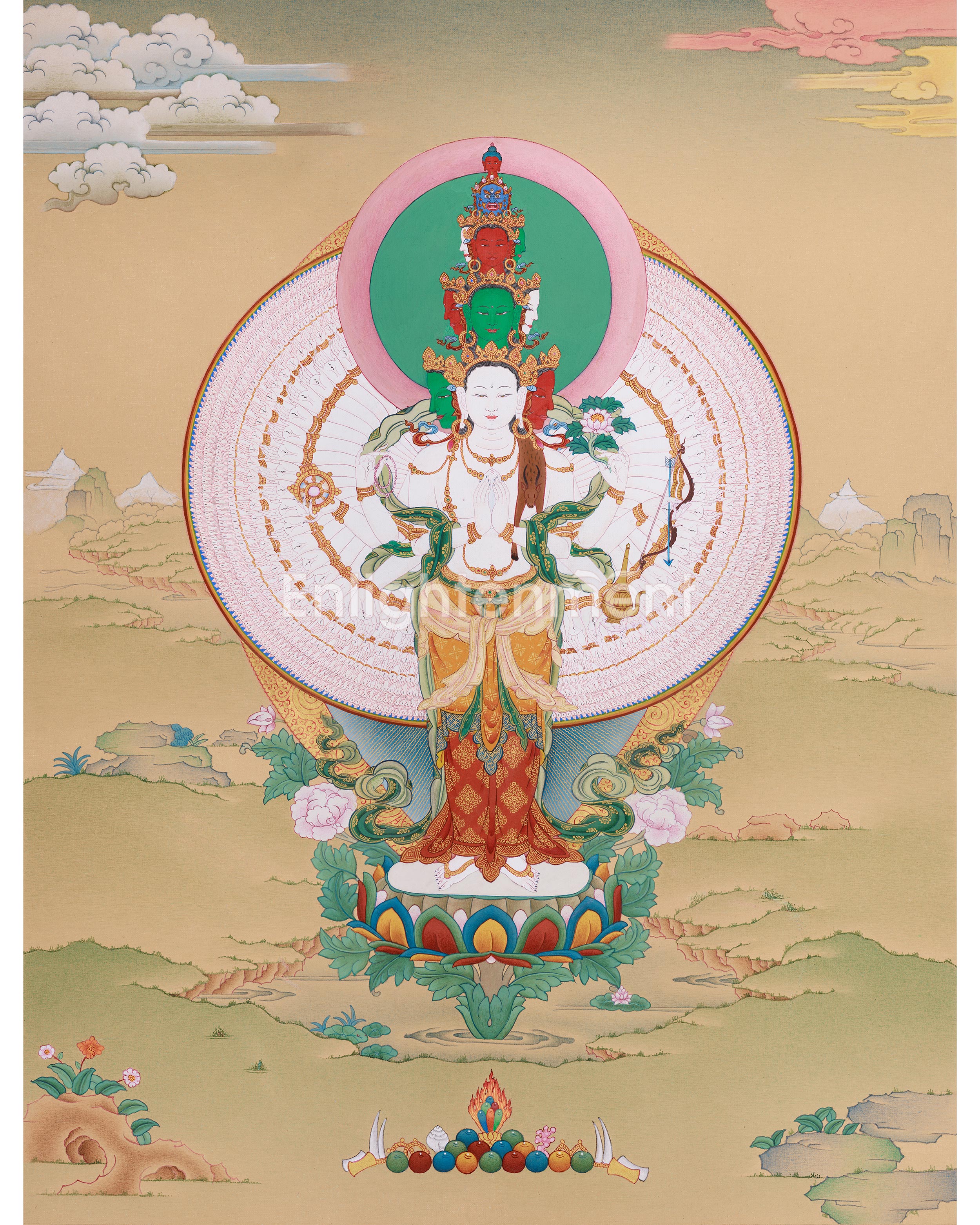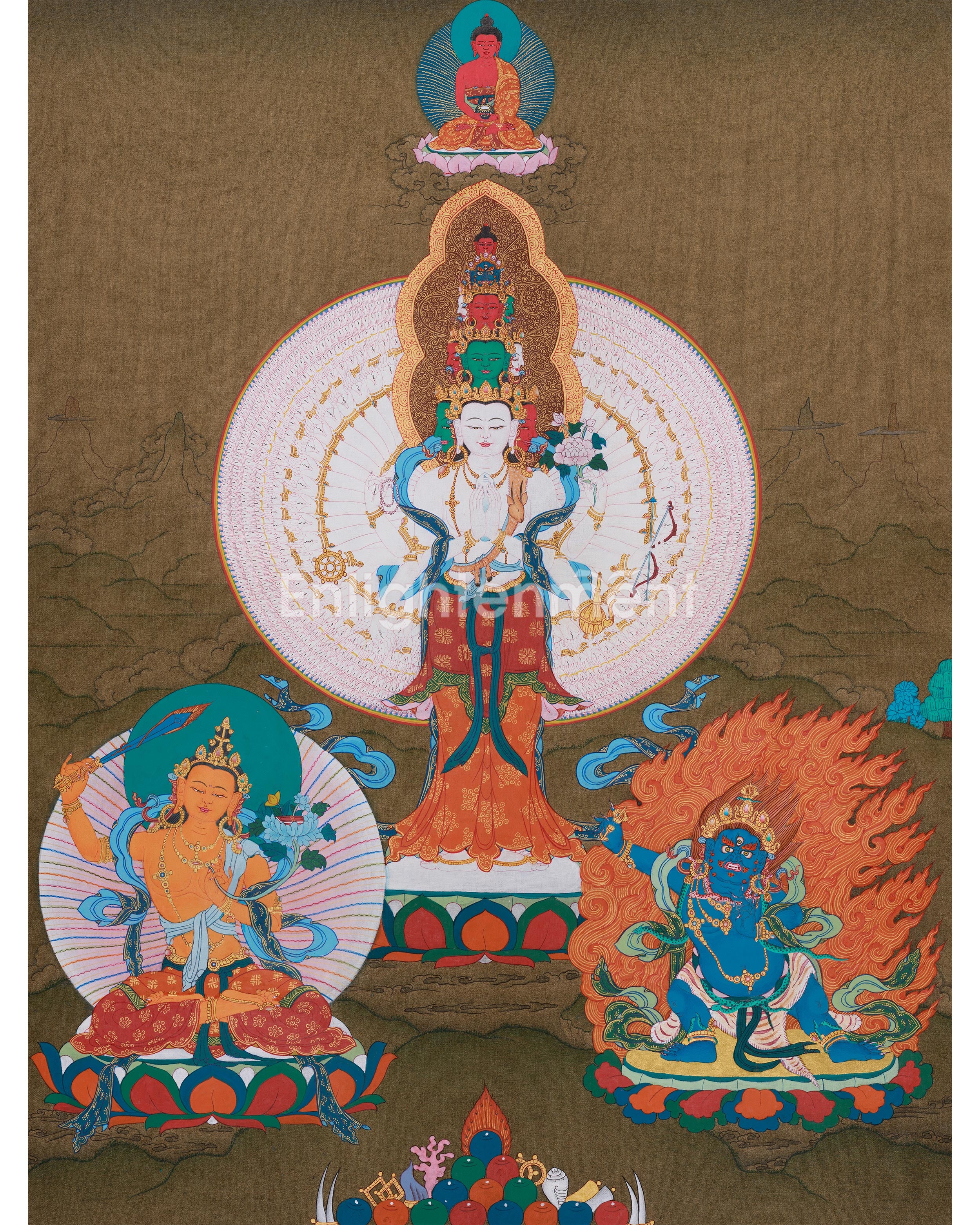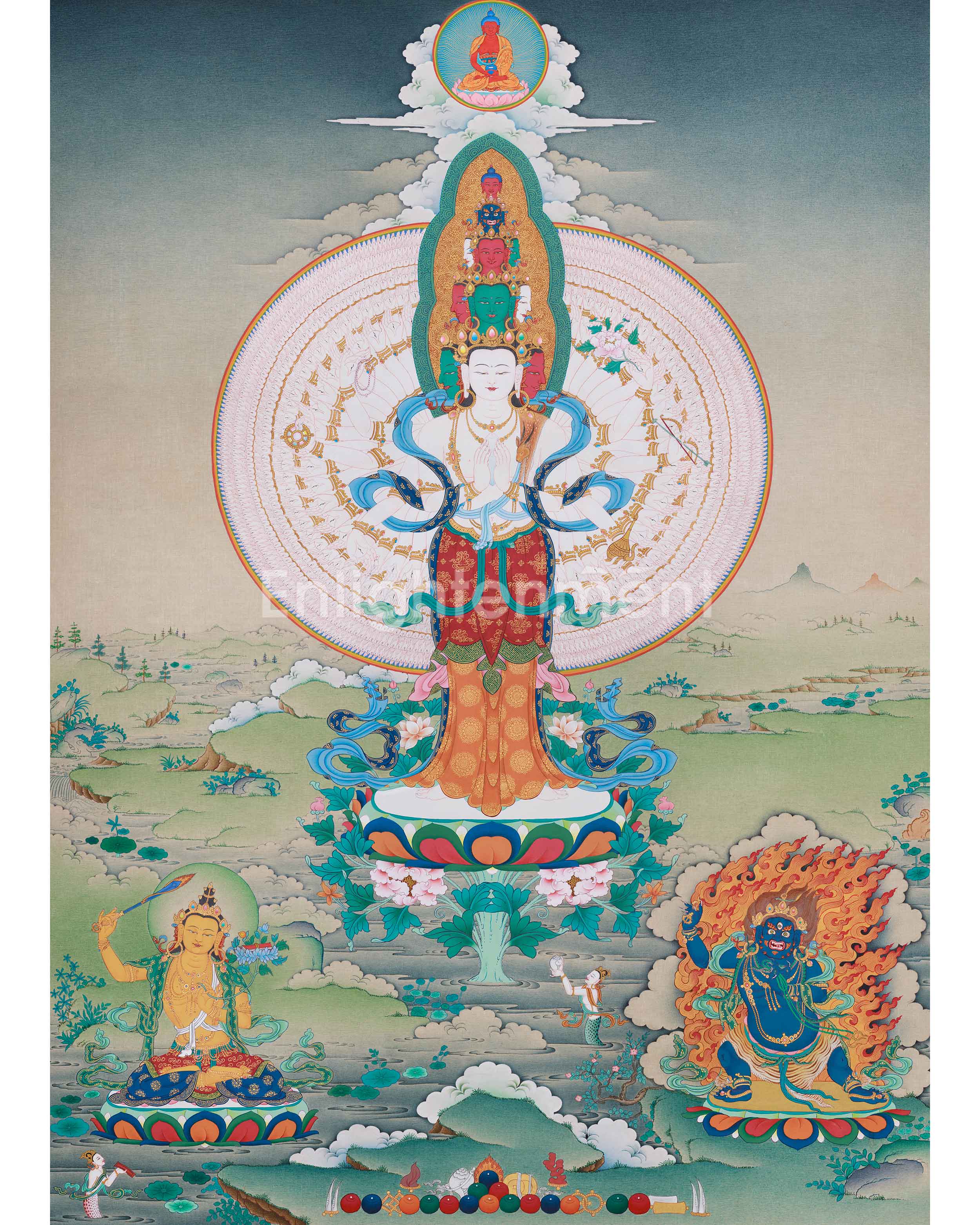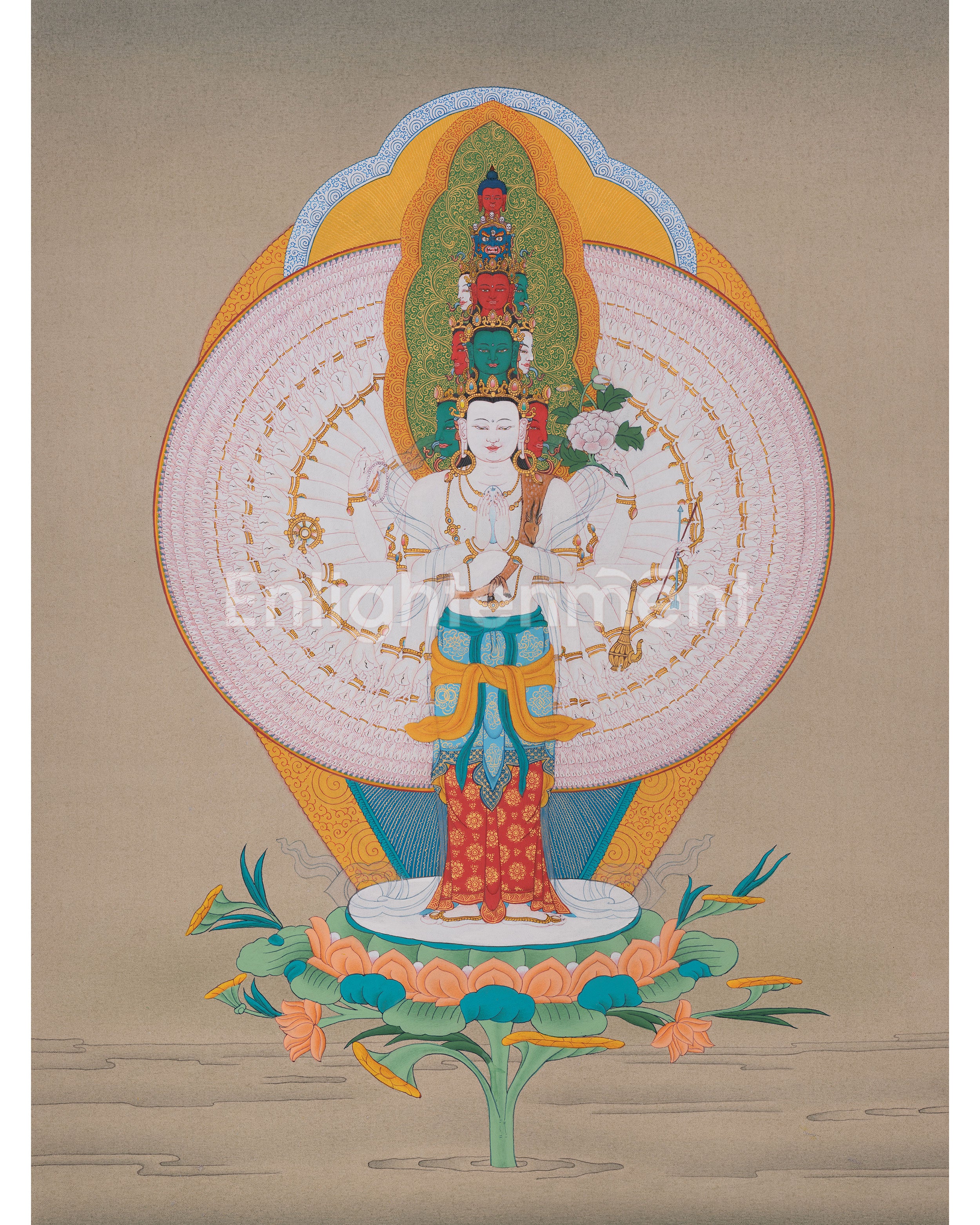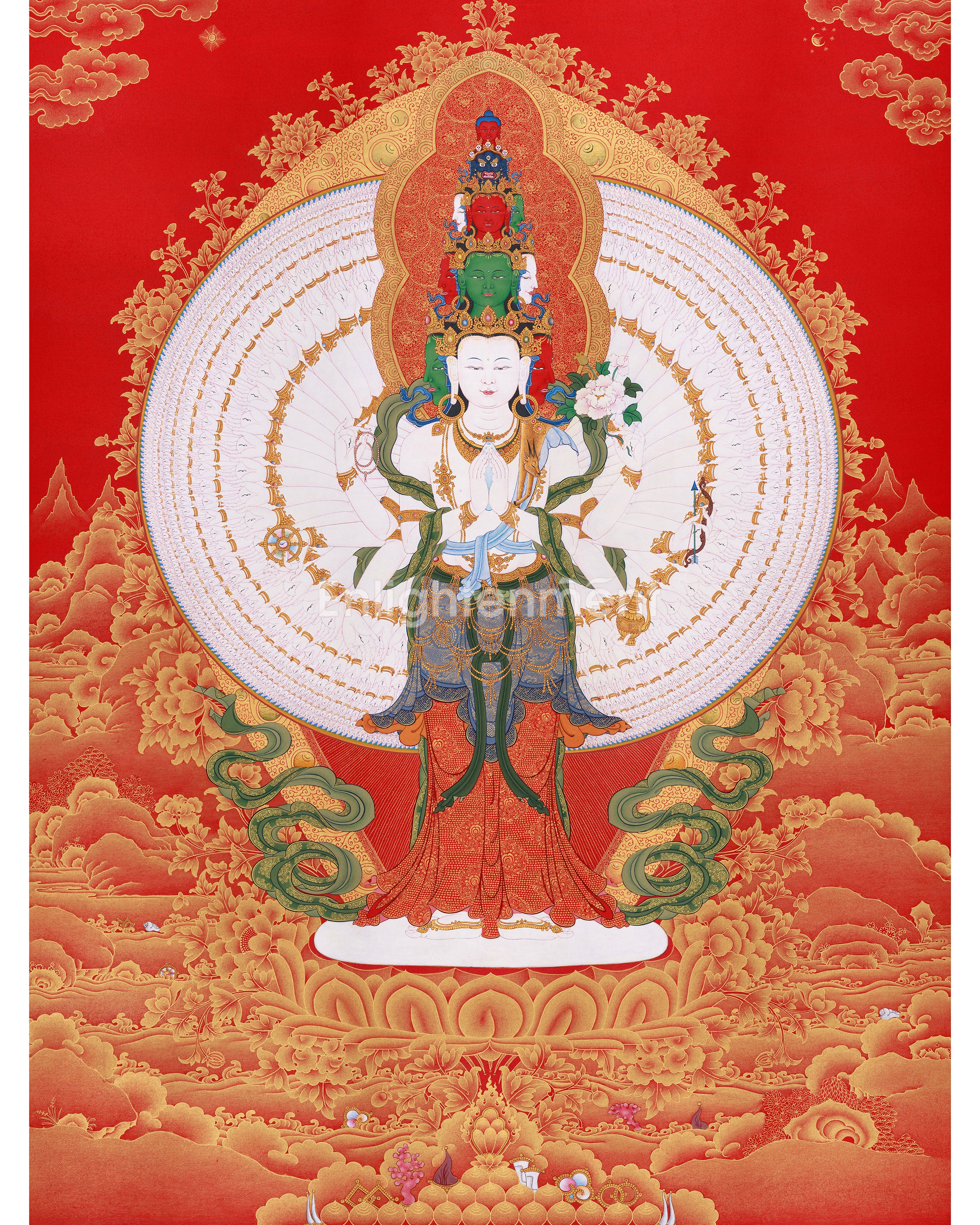Bodhisattva
5 products
Showing 1 - 5 of 5 products
Discover the Sacred Essence of Bodhisattva Thangka: Hand-Painted Collection from Enlightenment Studio
A highly esteemed and fundamental notion in Buddhism, the term "Bodhisattva" comes from the Sanskrit terms "bodhi" (enlightenment) and "sattva" (being). A Bodhisattva is essentially a person who, driven by immense compassion, has developed bodhicitta, or the mind of enlightenment, and who is en route to becoming a Buddha.
Our curated selection of authentic Bodhisattva Thangka paintings features timeless depictions of enlightened beings. You can explore and order from our wide range of Bodhisattva thangka paintings online, all available at Enlightenment Thangka. We offer premium-quality, original Tibetan thangka art that reflects the highest level of craftsmanship and spiritual significance.Each thangka is hand-painted on cotton canvas using natural stone colors and 24K gold, by master artists of our own Enlightenment Studio. Our Collection includes Bodhisattva such as:
-
Chenresig (Avalokiteshvara) – Bodhisattva of Compassion
-
Manjushri – Bodhisattva of Wisdom
-
Samantabhadra – Bodhisattva of Universal Goodness
-
Kshitigarbha – Bodhisattva of Great Vows
-
Maitreya – The Future Buddha
-
Vajrapani – Protector and Power of All Buddhas
Are these Bodhisattva thangka suitable for practice and offering?
Yes. These Bodhisattva thangkas are perfect for meditation, Buddhist practice, altar offerings, or meaningful spiritual gifts. Whether you're drawn to the compassion of Chenresig, the wisdom of Manjushri, or the future promise of Maitreya, you will find a
Why choose Enlightenment Thangka ?
-
✅ Hand-painted by senior artists with 20+ years of expertise
-
✅ Made with genuine natural pigments and 24K gold
-
✅ Free silk brocade
-
✅ Carefully packed and insured Shipping
-
✅ Trusted by Dharma practitioners and collectors worldwide
